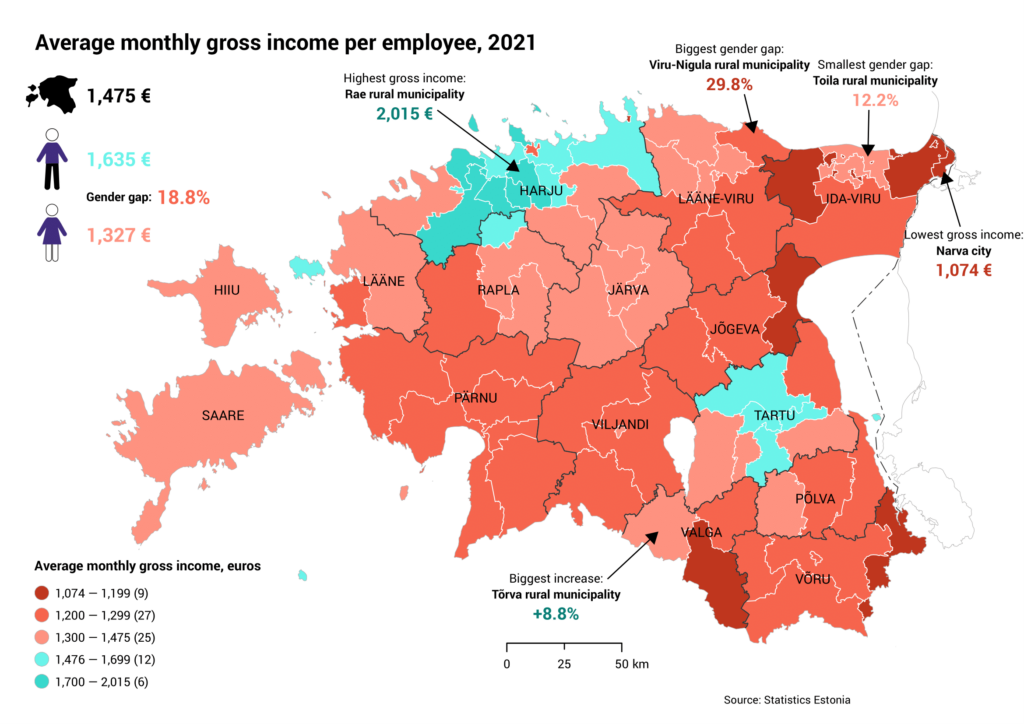According to Statistics Estonia, the country’s official statistics agency, in 2021, the average monthly gross income per employee was €1,475, which is €92 more than in 2020; the average monthly gross income increased by 6.7% year on year.
The average monthly gross income per employee was the highest in Harju County (€1,652) and Tartu County (€1,498), and the lowest in Ida-Viru County (€1,146). The difference between the counties with the highest and the lowest monthly income was €506.
Greta Tischler, an analyst at Statistics Estonia, said that, among local governments, the highest income was again earned in the rural municipalities of Harju County.
“The average monthly gross income was the largest in Rae rural municipality, which was also the only administrative unit where average monthly income exceeded €2,000. Among towns, the highest income was earned in Tallinn, the capital of Estonia – €1,631 per month on average,” Tischler said in a statement.
The monthly income per employee was the lowest in the town of Narva (€1,074), which was also the only administrative unit where the average monthly income was below €1,100.

Men earn considerably more than women
In 2021, the average monthly gross income was €1,635 for men and €1,327 for women. Based on age group, employees aged 25-49 earned the highest gross income – €1,657 per month on average. The lowest income was earned by employees aged under 25, whose average gross income was €989 per month.
In 2021, the total number of employees receiving income was 532,667. This number decreased in 2020 but started to rise again last year. Slightly more than a half of the income recipients were aged 25-49 (56%), followed by 50-62-year-olds (28%). There were fewer income recipients aged over 63 (10%) and aged under 25 (6%).
The analysis is based on the 2021 data of the Estonian Tax and Customs Board. The average monthly gross income per employee is calculated by dividing the average monthly sum of payments with the average monthly number of persons receiving payments. For the place of residence of the income recipient, the person’s place of residence is used.
Read also: Estonia’s gender pay gap still higher than the EU average.

